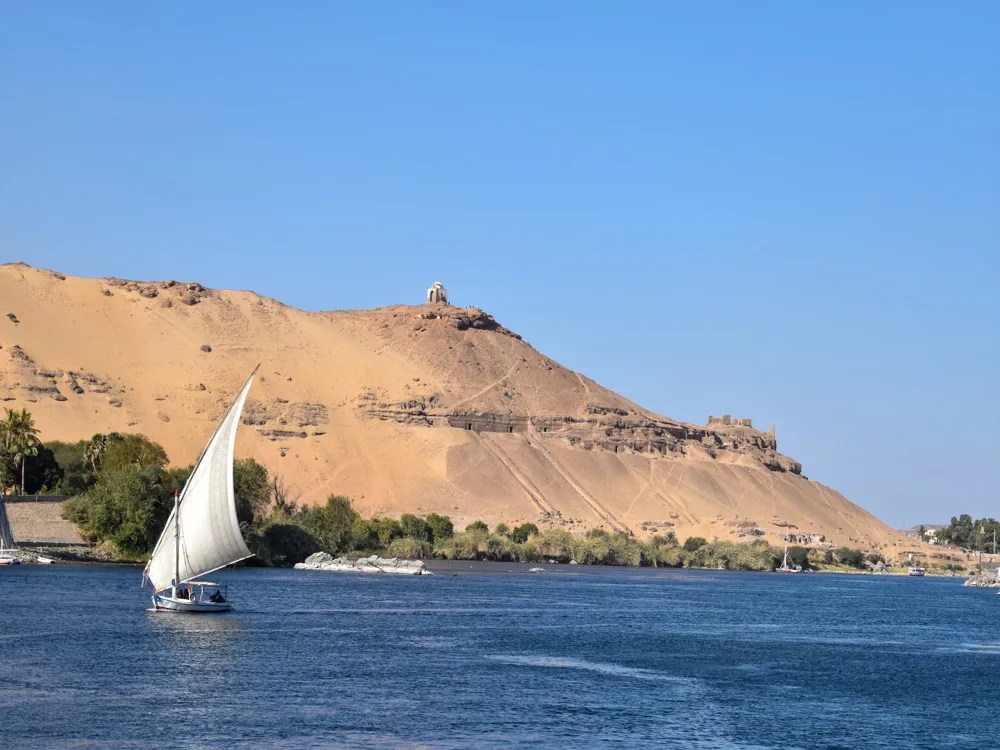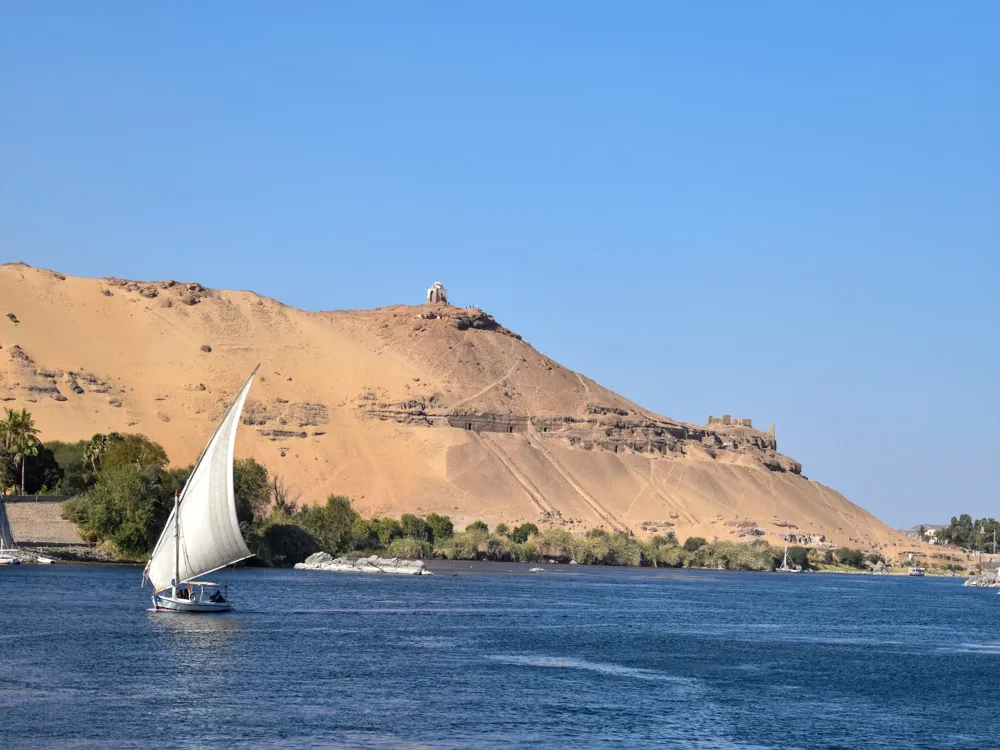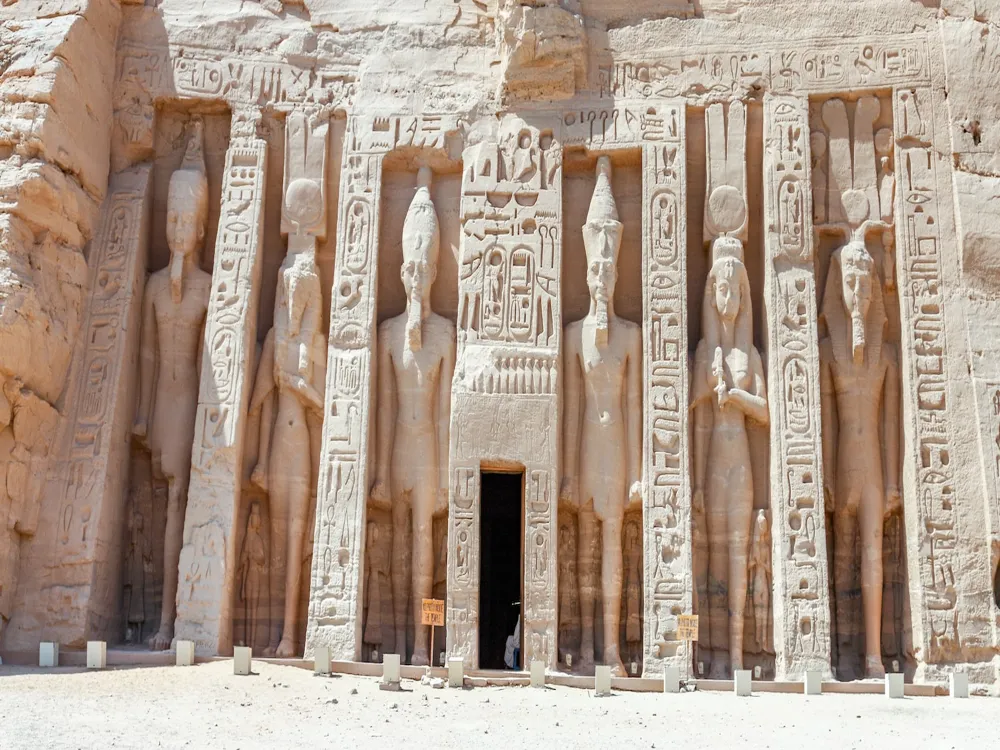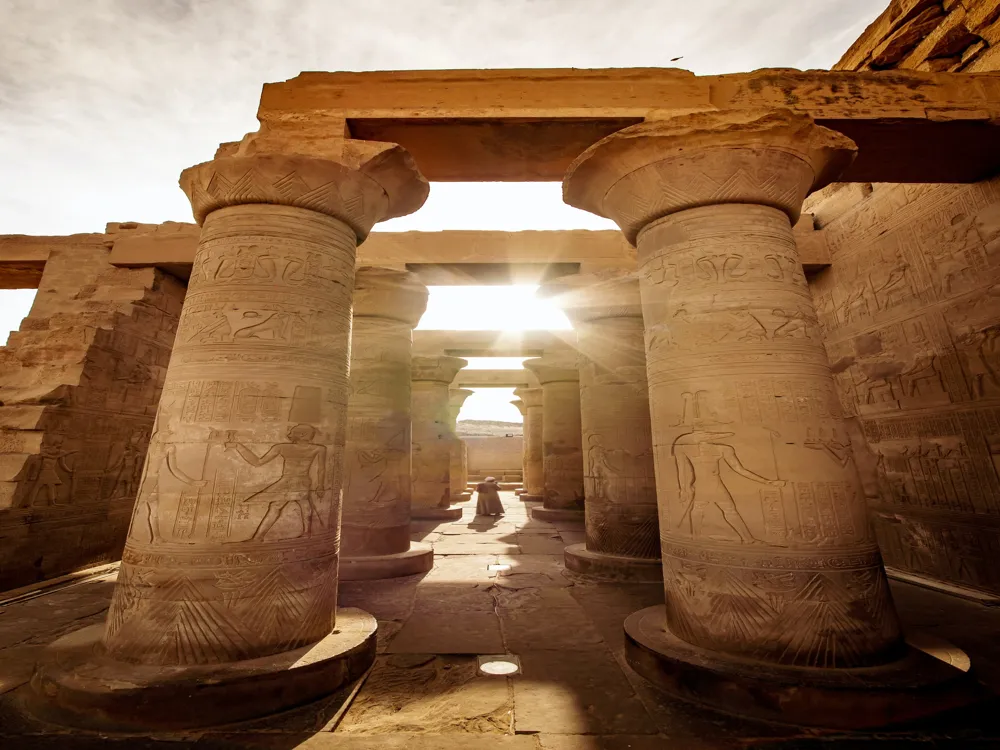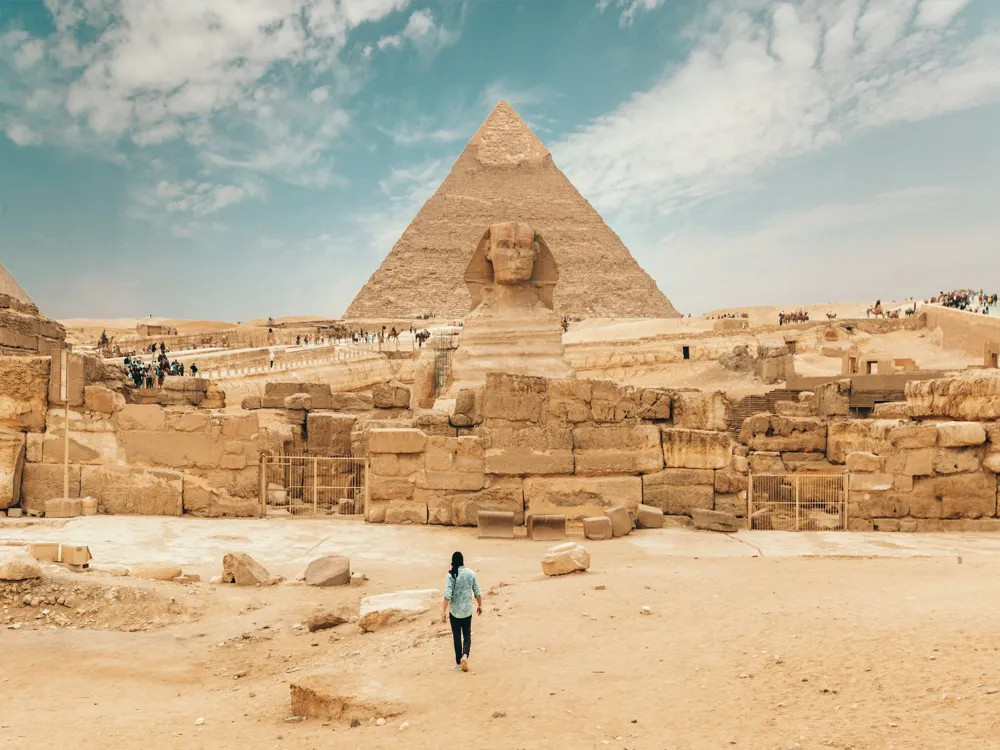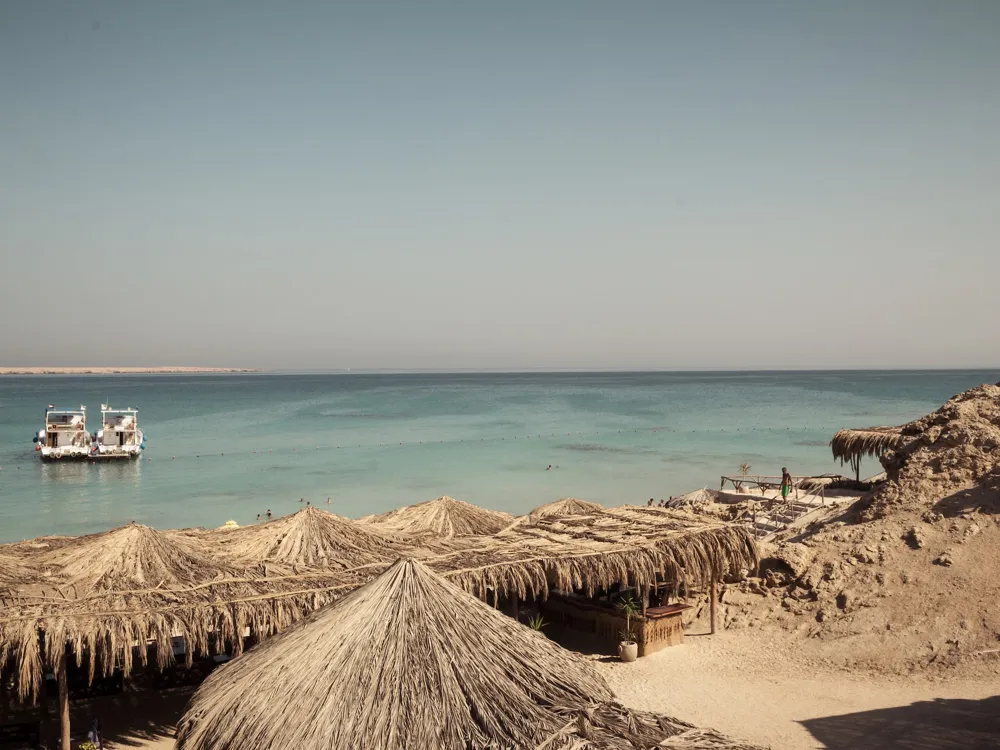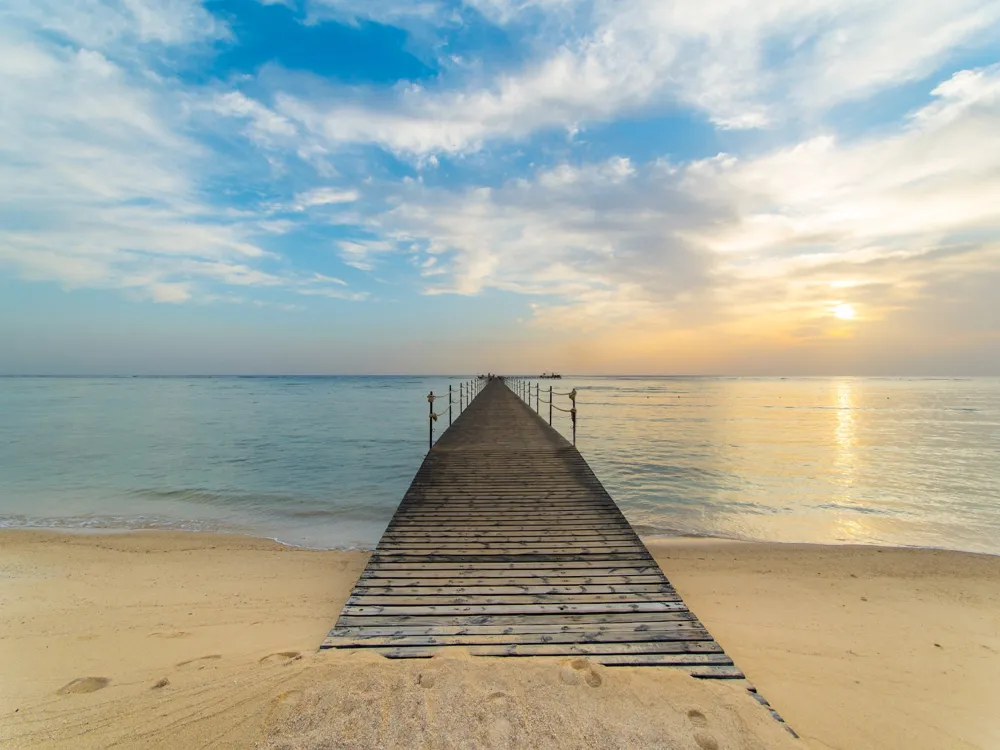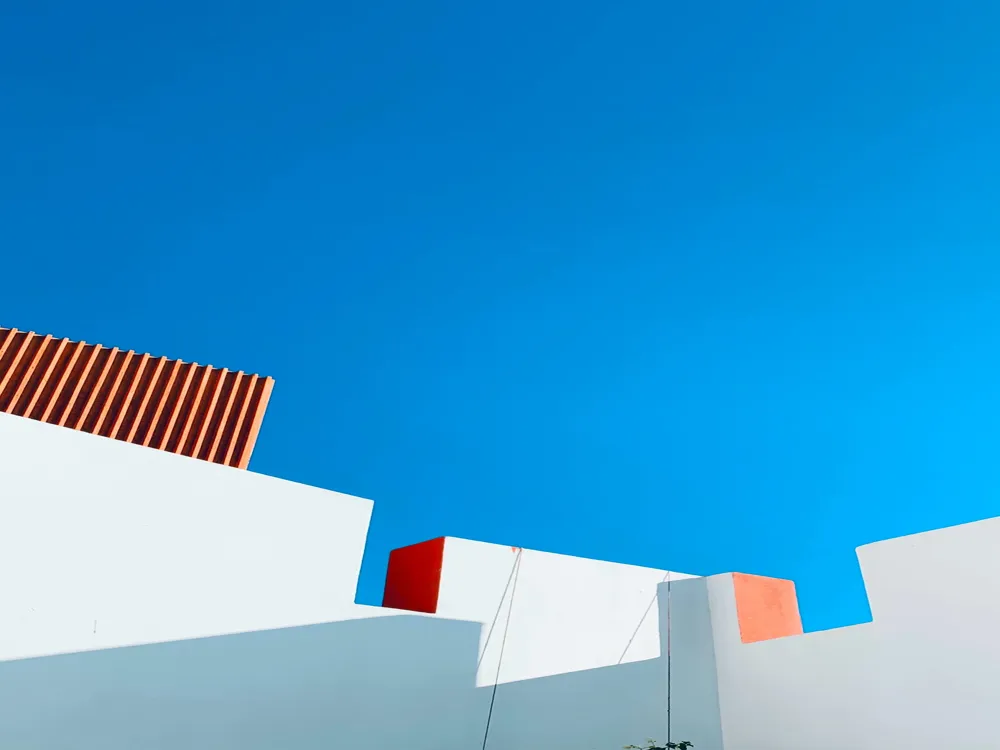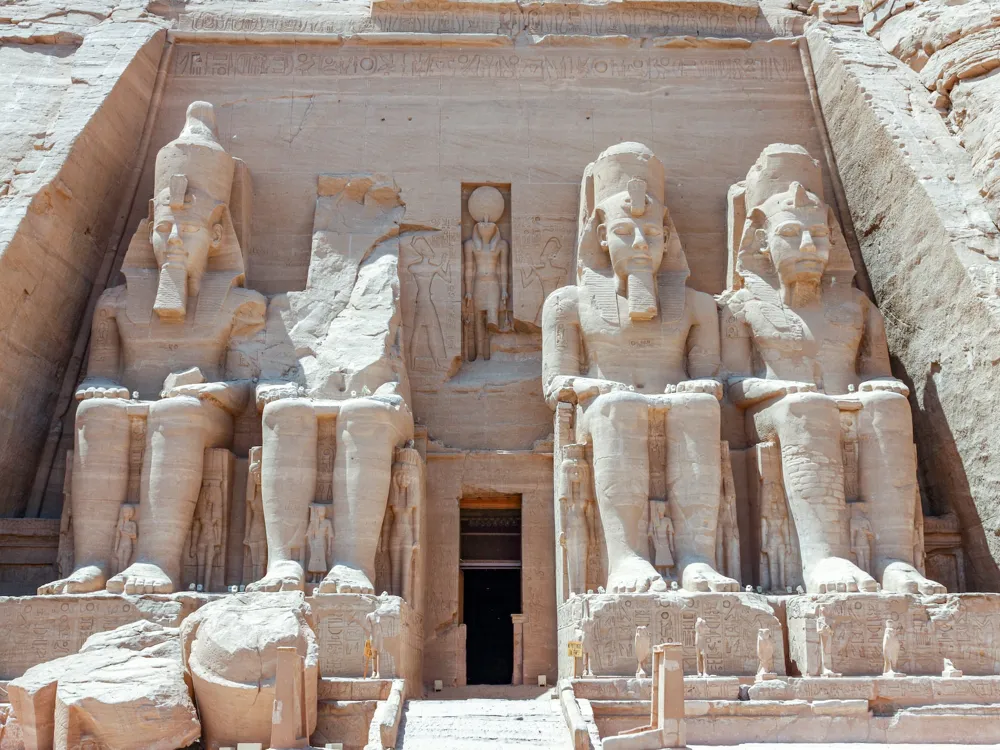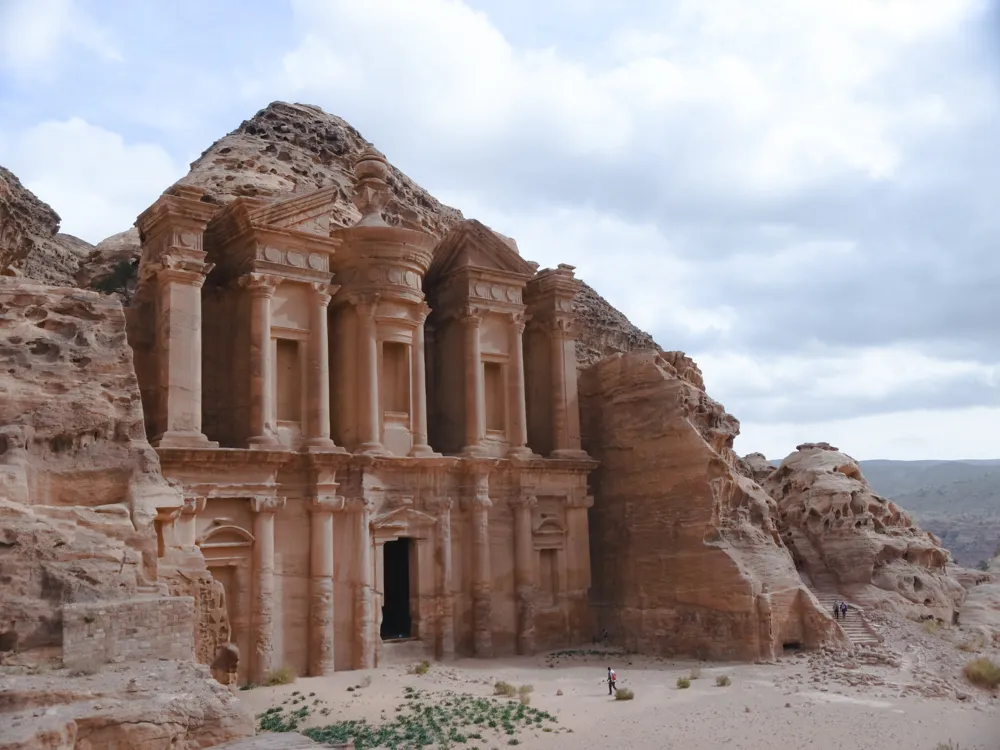The Monastery of St. Simeon in Aswan is one of Egypt's most significant Christian sites. Dating back to the 7th century, it was once a thriving center for the Christian community in Egypt. The monastery is renowned for its architectural beauty, with its massive sandstone buildings carved into the cliffs of the West Bank of the Nile River. Today, it stands as a testament to the region's rich religious and cultural history, attracting visitors from around the world. The architecture of the Monastery of St. Simeon is a blend of Nubian and Byzantine styles, reflecting the diverse influences that have shaped the region. The monastery's structures are primarily made from mud brick and feature large courtyards, living quarters, a church, and various other facilities. The church, dedicated to St. Simeon, is particularly notable for its domed structure and the intricate frescoes that adorn its interior walls. 1. Dress modestly as a sign of respect for the religious site. 2. Bring plenty of water and sunscreen, as the area can get very hot, especially during summer. 3. Consider hiring a guide to gain a deeper understanding of the monastery's history and architecture. 4. Check the opening times before your visit, as they can vary. 5. Be prepared for a bit of a hike to reach the monastery, and wear comfortable shoes. The Monastery of St. Simeon is located on the West Bank of the Nile River, opposite Aswan. Visitors can reach the site by taking a boat from the East Bank to the West Bank. From there, you can either walk or take a camel ride to the monastery. The journey offers a unique opportunity to enjoy the stunning views of the Nile and the surrounding desert landscape. Read More:Overview of Monastery of St. Simeon of Aswan
Architecture of Monastery of St. Simeon
Tips When Visiting Monastery of St. Simeon
Click to expand
How To Reach Monastery of St. Simeon
Monastery of St. Simeon
Aswan
₹ 68,661 onwards
View aswan Packages
Weather :
Tags : Historical Site
Timings : 8:00 AM –4:00 PM
Ticket Price : EGP 25
Planning a Trip? Ask Your Question
Aswan Travel Packages
View All Packages For Aswan
Top Hotel Collections for Aswan

Private Pool

Luxury Hotels

5-Star Hotels

Pet Friendly
Top Hotels Near Aswan
Other Top Ranking Places In Aswan
View All Places To Visit In aswan
View aswan Packages
Weather :
Tags : Historical Site
Timings : 8:00 AM –4:00 PM
Ticket Price : EGP 25
Planning a Trip? Ask Your Question
Aswan Travel Packages
View All Packages For Aswan
Top Hotel Collections for Aswan

Private Pool

Luxury Hotels

5-Star Hotels

Pet Friendly




